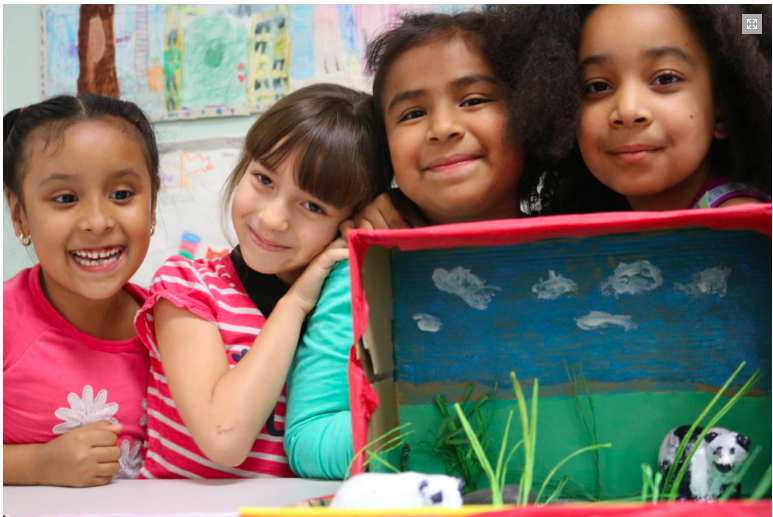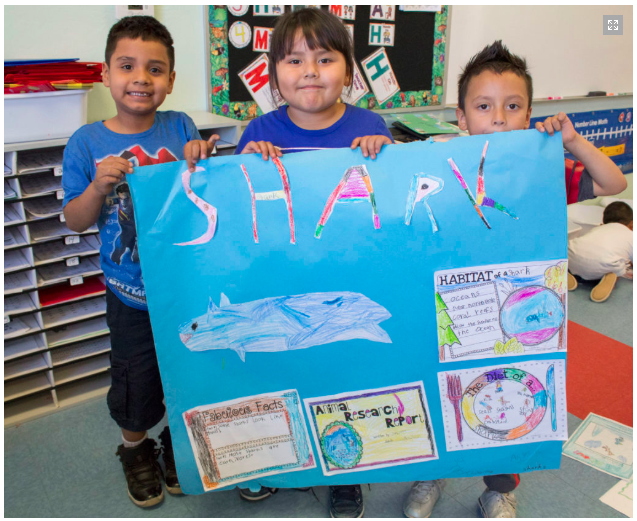An unconventional school found in Arizona, Create Academy is a public, tuition-free charter that advocates for social justice through arts education. Opened in central Phoenix in 2015, Create Academy “prepares all students for success in college, career, and society by teaching students to collaboratively invent, design, and implement creative solutions that address societal problems and injustices.”
Not only does Create Academy seek to educate students on social justice, their model supports students who have been historically disenfranchised due to economic or other societal inequities themselves, with 80–90% of their student population living at or below the poverty line.
In this interview with Headrush, former Principal Kelly Horn speaks of Create’s arts integration curriculum anchored in project-based learning, and the community partnerships they have established to empower civic-minded, rising youth.
“Arts integration is the leading catalyst for project-based learning for us,” states Horn. “We recognize that there’s a continuum of arts integration ranging from arts enhanced or enriched schools to schools that are completely arts integrated. We are now a work in progress and fall somewhere between arts enriched and total integration, as we are challenging ourselves to grow. It’s fun because there isn’t a whole lot of models from which we can learn.”
As a career educator with two decades of experience both as a teacher and administrator in diverse educational environments, Mr. Horn was especially drawn to Create’s bold approach and small, family feel of the school community.

So how did Create Academy come to be?
Our founder, Angela Penhall, who is still deeply connected to this school, initially came across compelling research about academic achievement in schools with Arts integration programs. A particular study by the National Endowment for the Humanities showed that students from low socioeconomic backgrounds who have an arts-infused school experience were succeeding as well as their peers from the middle-class and upper-class areas, with kids being more likely to have a stronger sense of direction, more likely to go to college, and even more likely to vote or to be involved in a civic action, etc. This research formed the core of Create Academy as an arts integration school with a focus on social justice.
What have you focused on in creating your arts integration program?
For the last two years, we’ve been privileged to have a grant we’ve used for two distinct things. The first was a heavy dose of professional development. We’ve worked with Focus 5 Inc, an offshoot of the Kennedy Center and the leading experts in arts integration for schools on a national level. We’ve had them on site every year to train our teachers to help hone this arts integration project. The second thing was our partnership with the rising youth theater, a local theatre group highly involved in social justice. We have an artist residence program through which theatre artists come and work in our school for an hour a week per class with our teachers.
Do you offer dance? I love dance!
I’m glad you asked. Right now, we have a ballroom dancing program with four of our different grades on a weekly basis, in addition to PE and to the theater group. This co-curricular activity is led by Dance Supporters, a non-profit group of world champion ballroom dancers who come to Title 1 schools teach the kids to dance.
I’m sure having the students work so closely with the community serves as a great source of inspiration for them.
There’s this recognition that, as a school, we have an obligation to go out into the community and be change agents. For instance, our theater program started as an anti-bullying effort. We wanted to teach kids some positive and practical ways to resolve conflicts that didn’t involve violence or negative behaviors. When the students can actually share what they’re doing with the community and see the ripples begin to form, that’s when it becomes full circle for us. Even though 80% of our kids live below the poverty line in vicious poverty cycles, teaching kids that they already have the tools to rise above their circumstances has been really powerful.

So what has been your biggest challenge in implementing this kind of arts integrated project approach?
Since we’ve effectively opened as a K five school, grades were created and changed from one year to the next as new students entered. Also, we’ve had kids come to us who have largely been failed by the schools they were in and are multiple grade levels behind in reading and math. This has been challenging because the state grading system ties to simple merit tests in those subjects, and our worth as a school is judged depending on the results. We’re required to complete the state standards, so there’s a need to intervene when kids arrive so far behind, but it’s the dynamic tension of improving the school yet also staying true to our focus on arts integration. By the eighth year of the school we’ll have a great perspective on what works, what the challenges that still remain are, what we succeeded in overcoming, and what we still need to work on.
It usually takes five years just for a school to feel like it’s even constructed the right learning culture, so I’m sure you’re evolving every day.
Absolutely. In Arizona, if a charter school gets a letter grade of D or F, you’re in jeopardy of being closed unless it goes up in one year’s time. Their new approach to closing schools is super aggressive and I get it. Kids deserve good schools, but I just feel like there should be a balance for younger schools that are trying new things. As a new school, children haven’t even fully benefited from what your curriculum can offer them. If I were in charge of the state grading system for charter schools, I would give each school a full cohort of students from start to finish before it is given a state grade. Based on most reputable evaluations, Arizona is at the bottom of the country in terms of our education. I would think you’d want to support schools that are looking at that and saying: “There’s probably a different way, let’s give it a shot,” but if you look at the charter schools that are most celebrated by the state, it’s those who have the more traditional programs.
What’s something you feel you’ve accomplished as a school?
The biggest thing for us this year is that all of the teachers from last year returned. That’s something that I believe schools like us have to pay huge attention to because it is so hard to find the right people. When you do, you need to bring them up to speed and get them involved in the culture of the school. And once you’ve got those magical people in place, you want to keep them at all costs.
What does your schedule look like?
We have a fluid block schedule. It creates time within classrooms and shared time between grade levels for intergenerational project-based learning. For example, the sixth grade class and the first grade class can partner in an initiative together. For the teachers, we keep five full days of professional development in the school year in addition to a full week of PD before school starts. Our agenda is tied to benchmark testing and to the touch points, new approaches in our artists in residence projects as well as data analysis days, etc. We’ll focus on these different things to make sure that we’re still meeting the academic goals for each kid on an individual basis.
What techniques do your staff employ to bring out the potential in students?
The teachers need to have a meaningful and a deep relationship with each of the kids as individuals, because the students in our school have to be willing to think about learning differently than how they’ve been asked to do so in the past. We’ve got a unique demographic; 30% of our kids at any given year qualify as homeless or in foster care, 65% to 70% of the kids in our school are Hispanic, and a large number of our kids don’t speak English at home. When it comes to things like project based learning or arts integration, it really requires some risk-taking on the kids’ behalf. Children who were marginalized outside of school and faced multiple adversities because of their socioeconomic status or their racial status aren’t going to feel comfortable taking a risk. So that’s why the element of trust between the teacher and the student leads all that we do.

